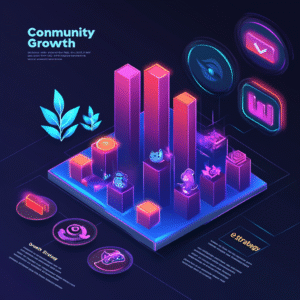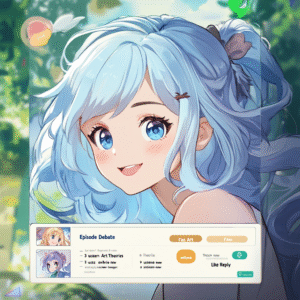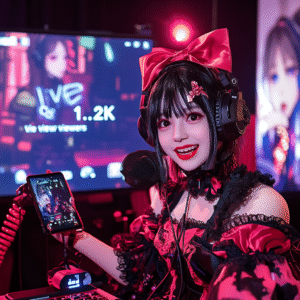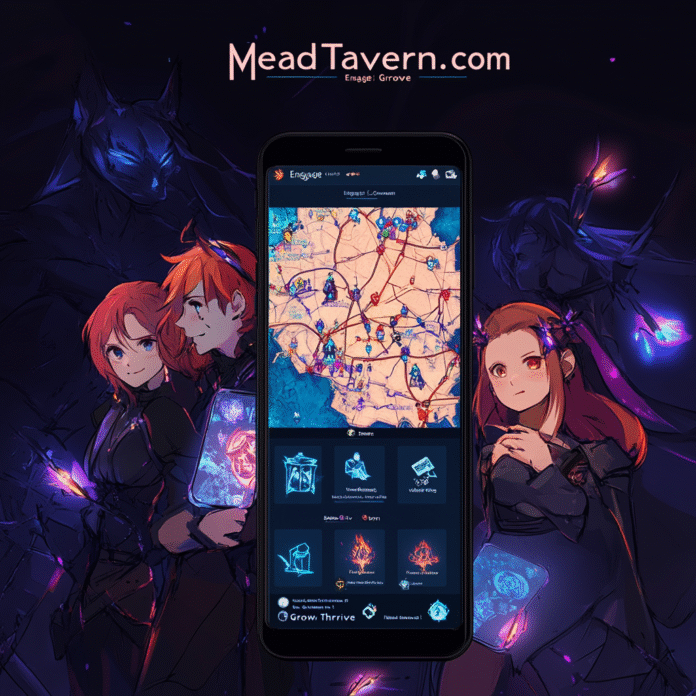1. Introduction
When I first set out to build an online hub for anime fans, I quickly realized that success hinges on more than just launching a Discord server or creating a subreddit. The real challenge—and the real magic—lies in How to Build an Engaged Anime Community that feels personal, active, and genuinely valuable to its members. In this guide, I’ll draw on hands-on experience and proven best practices to show you exactly how to transform casual visitors into loyal advocates, fueling both community growth and your blog’s monetization goals. From choosing the right platforms and defining clear, enforceable guidelines to crafting content that sparks real conversation, every insight here is geared toward helping you create a sustainable, thriving anime fandom hub.
At its core, How to Build an Engaged Anime Community is about fostering connections. You’ll learn how to identify and speak to your audience’s deepest passions—whether they’re die-hard mecha enthusiasts hunting for obscure series or newcomers eager to join watch-along events. I’ll guide you through setting up mentorship programs and gamification systems that reward participation, as well as show you how to leverage user-generated content to keep conversations fresh and members invested. By combining these tactics with data-driven analytics, you’ll be equipped to iterate rapidly, reinforcing the community features that resonate most and phasing out what doesn’t.
Throughout this article, you’ll find step-by-step instructions on everything from hosting live Q&A sessions with voice actors to integrating affiliate links seamlessly into event recaps. You’ll discover how to maintain a healthy, respectful environment with robust moderation protocols and transparent policies. I’ll also explain how to weave AdSense placements and affiliate CTAs into your community pages without disrupting the user experience, ensuring your blog not only thrives culturally but also financially.
Whether you’re a seasoned community manager or a solo blogger just starting out, this guide on How to Build an Engaged Anime Community will serve as your comprehensive blueprint. By the time you finish reading, you’ll be ready to launch or reinvigorate your anime fandom space—complete with clear action items, real-world examples, and best-in-class strategies to keep your members coming back week after week, month after month. Let’s dive in and begin crafting the ultimate destination for anime enthusiasts everywhere.

2. Why an Engaged Anime Community Matters
An engaged community is the lifeblood of any successful blog. Central to How to Build an Engaged Anime Community is the understanding that active participation translates directly into increased session durations, repeat visits, and higher ad revenue. According to a 2024 HubSpot study, 78% of consumers are more likely to trust brand recommendations from actual community members, and 61% of online retailers reported that their highest-performing customers were community participants. For MeadTavern.com, creating a space where fans can discuss plot theories, share fan art, and connect over watch parties means longer on-site time and more pageviews, which in turn elevates your Google AdSense RPM.
Beyond monetization, user discussions spark fresh content ideas. Threads debating the latest anime season can be repurposed into blog posts, video scripts, or newsletter features—providing a continuous feedback loop that keeps content calendars full and community members feeling heard. An engaged audience also becomes brand advocates, sharing your content organically across social channels and forums. By tapping into their passion, you leverage free word-of-mouth marketing, reducing acquisition costs and accelerating growth. If you want deeper insights into the power of fandom, see our analysis on anime fandom trends (https://meadtavern.com/anime-fandom-trends/).
3. Choosing the Right Platform
Choosing the right platform is a key component in How to Build an Engaged Anime Community because it determines how easily members can discover you, participate, and stay engaged over time. The top contenders include:
• Discord: Offers real-time chat with text, voice, and video channels; highly customizable with bots for moderation and engagement; perfect for live watch-alongs and casual hangouts.
• Reddit: Publicly searchable, with upvote/downvote mechanics that surface the most engaging content; excellent for SEO and driving new visitors.
• Facebook Groups: Familiar interface for many users; integrated events, polls, and file sharing; great for reaching slightly older demographics.
• Forums (Discourse, phpBB): Structured, threaded discussions that accommodate long-form posts; strong categorization supports evergreen content and detailed guides.
Hybrid approaches often work best: use Discord for day-to-day chat and events, while leveraging Reddit or a forum for in-depth discussions that attract search traffic. Whichever platform you choose, ensure it aligns with your audience’s habits and your capacity for moderation and content creation.
4. Understanding Your Target Audience
The foundation for How to Build an Engaged Anime Community lies in knowing your audience deeply. Conduct demographic and psychographic research to identify age ranges (typically 15–35 in the US), preferred genres (shounen, slice-of-life, isekai), and common activities (cosplay, fan art, theory crafting). Use surveys on your blog, Twitter polls, or tools like Google Forms to ask questions such as “What frustrates you most about online anime communities?” or “Which features would you love to see on our server?”
Compile your findings into audience personas—for example, “Midwest college student who loves mech anime and wants spoiler-free discussions” or “Young professional in California seeking weekly watch-party schedules.” Tailor platform choices, content formats, and event timing to these personas. By centering your strategy on real needs and preferences, you ensure that every initiative—from discussion channels to watch-alongs—resonates and fosters loyalty.
5. Setting Clear Community Guidelines
A safe, respectful environment is non-negotiable for community longevity. In How to Build an Engaged Anime Community, articulate rules covering:
• Respectful Behavior: Zero tolerance for harassment, hate speech, or doxxing.
• Spoiler Policy: Mandatory spoiler tags and channel-specific warnings.
• Topicality: Restrict off-topic posts to designated channels (e.g., #off-topic or #introductions).
• Moderation Procedures: Outline warning levels, timeout durations, and appeal processes.
Pin the guidelines in your Discord #rules channel or as a sticky post on forums. Enforce them consistently with a combination of automated bots (MEE6, Dyno) and human moderators. Reward positive contributions with badges or special roles to reinforce desired behavior. Clear, enforced guidelines build trust, making members more likely to invite friends and participate regularly.
6. Crafting Engaging Content
Crafting Engaging Content for How to Build an Engaged Anime Community means offering a variety of formats that cater to different engagement styles and keep the conversation fresh.
6.1 Discussion Prompts
Open-ended questions spark thoughtful responses. Examples:
• “Which anime protagonist from 2024 overcame the greatest odds?”
• “Rate the top five battle scenes in anime history and why.” (see Best Anime Fights: https://meadtavern.com/best-anime-fights/)
Rotate weekly themes—character arcs one week, world-building the next—to maintain momentum.
6.2 Live Watch-Alongs
Schedule weekly watch parties using Discord Stage channels or Twitch. Announce times well in advance, post reminders via bots, and facilitate post-episode discussions. Encourage POV reactions by having members share screenshots or custom emotes.
6.3 User-Generated Features
Host monthly fan-art contests, AMV challenges, and theory writing competitions. Showcase winners in a “Fan Spotlight” blog post and on social media, granting winners digital badges and a forum signature flair. This peer recognition encourages ongoing participation.

7. Moderation and Conflict Management
Proactive, transparent moderation is the backbone of a healthy community. First, assemble a diverse team of 5–7 trusted moderators who reflect your members’ demographics and interests. Draft a comprehensive Moderator Handbook that defines roles, responsibilities, and escalation paths. Include clear procedures for handling spam, harassment, and rule violations—outlining when to issue warnings, temporary mutes, or permanent bans. Equip your team with tools such as MEE6 or Dyno for automating routine tasks (spam filters, profanity checks, link whitelisting) and set up dedicated channels for private mod discussions and incident logging. Provide quarterly training sessions—covering topics like unbiased decision-making, cultural sensitivity, and mental health first aid—to ensure your moderators stay prepared and supported.
Conflict resolution should be swift but fair. When disputes arise, move conversations to private threads or voice channels to de-escalate tensions publicly. Follow a standardized appeal process: notify members of actions taken, provide evidence (chat logs), and offer a chance to present their side. Maintain an anonymized “mod transparency log” in a read-only channel so members understand enforcement consistency. Monitor community health metrics—such as report rates, appeal outcomes, and average resolution time—to identify patterns and adjust policies. Encourage feedback through a “Moderation Feedback” form or periodic surveys, and share summary reports with the wider community to build trust. For a deep dive into best practices, watch this guide to online community moderation: https://www.youtube.com/watch?v=Ot5QDT7gAD8
8. Leveraging Social Media Channels
Effectively leveraging social media channels amplifies the principles of How to Build an Engaged Anime Community by driving discovery and funneling new members into your core platforms.
• Twitter/X: Live-tweet key moments during premieres; run hashtag campaigns like #MeadTavernWatchParty.
• Instagram: Post Reels showcasing cosplay tutorials, behind-the-scenes edits, or highlight clips from fan events.
• TikTok: Produce short theory breakdowns using trending audio; stitch with viral anime clips.
• Facebook: Create Events for virtual gatherings; use polls to decide upcoming watch-along titles.
Always include a clear call-to-action driving users back to your Discord invite or forum signup link. Maintain a consistent brand voice and visual style across platforms.
Just like a perfectly timed anime AMV can go viral overnight, your TikTok edits deserve the same spotlight. This course shows you which AI tools and prompt formulas will turn your favorite fight scenes or transformation sequences into eye-catching clips that people can’t scroll past. Think of it as your own personal animation studio—no drawing required.
Make your anime edits pop Hotmart.
9. Hosting Virtual and IRL Events
Hosting events is one of the standout tactics within How to Build an Engaged Anime Community because they create memorable experiences and deepen emotional bonds.
• Virtual Q&As: Invite voice actors or cosplayers for live streams on YouTube or Twitch—promote via all channels.
• AMA Sessions: Use Discord Stage channels; collect questions in advance via a Google Form.
• Local Meetups: Partner with local anime shops or cafes to host monthly gatherings; use Meetup.com or Facebook Events for RSVPs and reminders.
• Contests & Giveaways: Collaborate with affiliate sponsors for merchandise prizes; require sharing event posts to enter.
After each event, publish recap blog posts with photos, key takeaways, and timestamps. Encourage attendees to share feedback via surveys.

10. Measuring Success with Analytics
Measuring Success with Analytics is critical to understanding the progress of How to Build an Engaged Anime Community and making data-driven improvements.
• Discord Metrics: Track daily active users (DAU), message volume per channel, and member retention charts.
• Reddit/Forum Metrics: Monitor subscriber growth, post upvote ratios, and comment activity.
• Google Analytics: Analyze referral traffic from community links, bounce rate, pages per session, and average session duration.
• Social Media Insights: Use native analytics on Twitter, Instagram, and TikTok to gauge post engagement and follower growth.
Set SMART goals—e.g., increase DAU by 15% in three months or achieve an average session duration above five minutes on community pages—and review these metrics in monthly strategy meetings. Use A/B testing on discussion prompts, event times, and content formats to optimize for maximum engagement.
11. Conclusion
In this comprehensive guide on How to Build an Engaged Anime Community Online, we’ve covered the critical steps—from selecting the ideal platform mix and defining clear, enforceable guidelines to crafting diverse, interactive content and leveraging social amplification. Now, it’s time to bring these elements together into a cohesive, ongoing strategy. First, establish a regular cadence for engagement activities: schedule weekly discussion prompts, monthly watch-alongs, and quarterly virtual Q&As to maintain momentum. Next, continuously solicit feedback through polls and analytics reviews, using those insights to refine your content calendar and community rules. Reward your most active contributors with badges, special roles, or exclusive content to foster a sense of ownership and belonging.
Don’t forget to integrate your blog’s monetization goals—strategically place AdSense units in high-traffic community pages and weave affiliate product recommendations into event recaps and “Fan Spotlight” posts, always with natural, contextual CTAs. Finally, treat your community as a dynamic organism: stay responsive to emerging anime trends, experiment with new engagement formats like VR watch-parties or interactive polls, and scale your moderation team in step with growth. By combining data-driven iteration, member recognition, and deliberate monetization tactics, you’ll transform MeadTavern.com into the premier online hub for anime enthusiasts—driving sustained traffic, deepening fan loyalty, and achieving your revenue targets.
12. Frequently Asked Questions (FAQ)
1. Which platform is best for anime communities?
Discord excels at real-time chat, voice channels, and custom bots for events, while Reddit enhances discoverability and SEO through upvotes and public threads. A hybrid approach—Discord for daily engagement and Reddit for long-form discussions—often delivers the strongest results.
2. How often should I post prompts or host events?
Aim for 2–3 discussion prompts per week to maintain daily activity, one monthly live watch-along or Q&A to foster deeper connections, and quarterly larger events (e.g., virtual panels or IRL meetups) to boost excitement and attract newcomers.
3. What’s the best way to monetize my community?
Integrate AdSense units strategically on high-traffic pages (e.g., community highlights, event recaps) and weave affiliate CTAs into relevant posts—such as “Fan Spotlight” articles or tutorials—always with natural, contextual language and clear disclosure.
4. How do I handle spoilers effectively?
Create dedicated spoiler channels and require spoiler tags in mixed channels. Use automated bot reminders before members post potential spoilers, and enforce consequences for repeated violations to preserve a respectful environment.
5. How can I recruit and train moderators?
Select 5–7 active, trusted members; provide a detailed Moderator Handbook with escalation paths; schedule quarterly training on tools (MEE6, Dyno), conflict resolution, and cultural sensitivity; and rotate duties to prevent burnout.
6. What growth targets should I set for the first six months?
Establish SMART goals such as:
1,000 active Discord members (Daily Active Users)
5,000 subreddit or forum subscribers
20% participation rate in weekly polls/discussions
Track these KPIs monthly and iterate based on engagement data.
7. How can I keep content ideas fresh?
Leverage user-generated content—fan art contests, theory challenges, AMV showcases—and repurpose top discussions into blog posts or video scripts. Regularly solicit feedback via surveys and “office hours” to identify trending interests.
8. What analytics should I monitor?
On Discord: DAU, message volume, retention rate. On forums/Reddit: subscriber growth, upvote/comment ratios. In Google Analytics: referral traffic from community links, session duration, pages per session. Use these metrics to optimize your content calendar and event schedule.
9. How do I maintain community trust and transparency?
Publish an anonymized “mod transparency log” showing enforcement statistics and rule updates. Share quarterly summary reports and incorporate member feedback into policy revisions, ensuring everyone understands how and why decisions are made.
10. Where can I find more advanced strategies?
For deeper insights on anime fandom dynamics, check our analysis of broader trends:
https://meadtavern.com/anime-fandom-trends/
